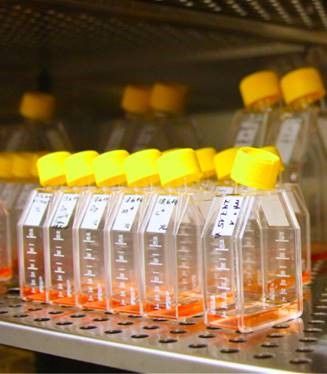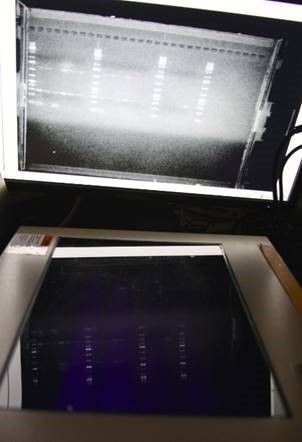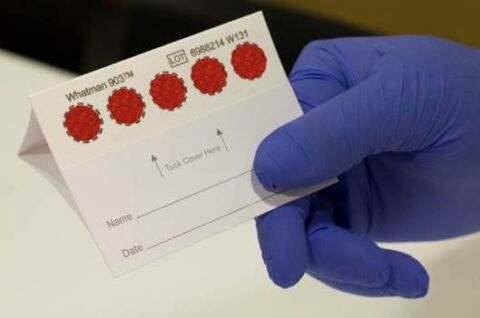Contact
Department of Infectious Diseases and Hospital Epidemiology
Prof. Dr. med. Karin Metzner
University Hospital Zurich
Rämistrasse 100
8091 Zurich
Our projects are supported by the Swiss HIV Cohort Study, National Institutes of Health (NHI), ESTHER Switzerland, the Hartmann Müller Foundation, unrestricted grant by Gilead Sciences and a Forschungskredit Candoc to Anne Inderbitzin.
In our ongoing study, we bring HIV-1 evolution into the laboratory. In the so far longest serial passaging experiments of HIV-1 we discover interesting dynamics of HIV-1 evolution. HIV-1 populations are serially passaged in two T-cell lines and we observe an extreme degree of parallel evolution. Other intriguing findings are differences in the continuous accumulation of majority mutations, i.e., fixation of viral variants in HIV-1 populations, and the different dynamics of viral diversity in the two environments. (F. Bertels et al., Molecular Biology and Evolution, 2019)
We are continuing this long-term HIV-1 evolution experiment in close collaboration with Prof. Roland Regoes, ETH Zurich.
Anne Inderbitzin (PhD student), Tom Loosli (Master student)
Although an HIV-1 infection can be effectively treated, its cure is impeded by the persistence of the latent HIV-1 reservoir, which is invisible to the host immune surveillance and unsusceptible to antiretroviral therapy. Latent HIV-1 proviruses are transcriptionally silent. This project involves the examination of HIV-1 integration sites in search of factors that govern the transcriptional activity of HIV-1 proviruses.
Jasmin Tschumi (Master student)
We previously observed high variabilities of the viral reservoir sizes and decay in more than 1,000 individuals who were successfully receiving ART for at least 5 years. Episodes of intermittent viremia, e.g., viral blips, were significantly associated with viral reservoir size and slower decay (N. Bachmann et al., Nature Communications, 2019). This raises an important question: Are the episodes of intermittent viremia the cause or the consequence of the slower viral reservoir decay?
In this project, we will investigate in detail low level virus replication and clonal expansion of persistently HIV-1 infected cells from HIV-1 infected individuals, two potential driving forces of viral reservoir stability. This project is performed in close collaboration with the research groups of Prof. Huldrych Günthard and Prof. Roger Kouyos here at our Division of Infectious Diseases, University of Zurich.
Herbert Afegenwi Mbunkah (former PhD student), Benjamin Wenk (Master student)
Antiretroviral therapy has turned a deadly infection with HIV-1 into a chronic life-long disease. However, this can be compromised by the development of drug resistance. In Cameroon, not all options for combination ART are available and so, it is even more important to watch out for the emergence of drug-resistant HIV-1 that leads to virological failure in treated patients. This may subsequently lead to transmission of drug-resistant HIV-1 to the uninfected, diminishing future ART options for these individuals.
We are working on determining the prevalence and recent trends in the emergence of drug resistance-associated mutations in untreated HIV patients from Cameroon, using a Next-Generation Sequencing assay suitable for all HIV-1 subtypes. Data generated will better inform optimal antiretroviral therapy delivery in Cameroon.

Sarah Klinnert (PhD student)
The main hurdle towards a cure of HIV-1 is the presence of the HIV-1 latent reservoir, which is defined as transcriptionally inactive, integrated HIV-1 proviruses that persist life-long in the human body, hidden from the immune system.
We aim to utilize the state-of-the-art CRISPR/Cas9 gene editing technology in two different strategies to uncover and eliminate these latently HIV-1 infected cells. In the first approach, we aim to activate the latent proviruses by using a CRISPR activation system. Thereby, we want to favor subsequent elimination of formerly latently infected cells and also of the reactivated virus by cytopathic viral effects, immune surveillance mechanisms, and antiretroviral therapy. Second, we seek to target different regions of HIV-1 to excise crucial viral genes and/or to introduce mutations to render the provirus replication defective. Both approaches will be combined with a retargeted adenoviral delivery system, which allows specific delivery into the major part of the latent reservoir, namely CD4+ resting memory T-cells.
This project is a collaborative effort together with Prof. Huldrych Günthard’s, Prof. Alexandra Trkola’s, and Prof. Andreas Plückthun’s groups (UZH).
Department of Infectious Diseases and Hospital Epidemiology
Prof. Dr. med. Karin Metzner
University Hospital Zurich
Rämistrasse 100
8091 Zurich